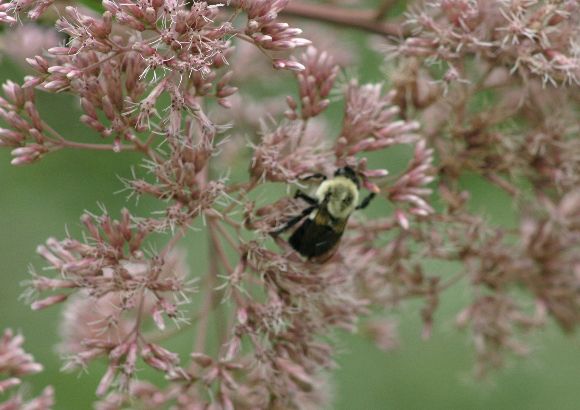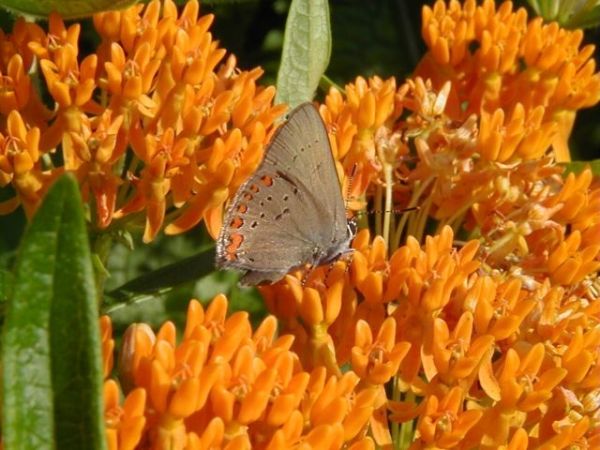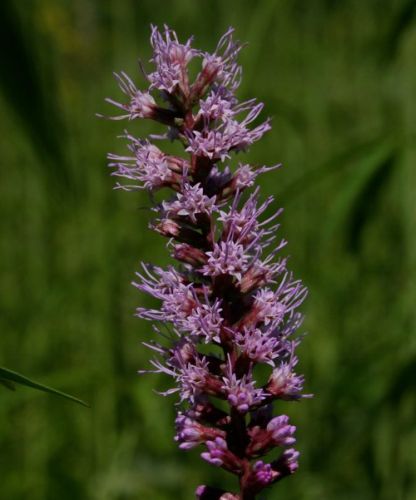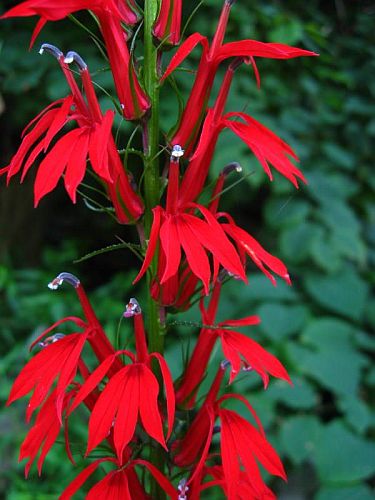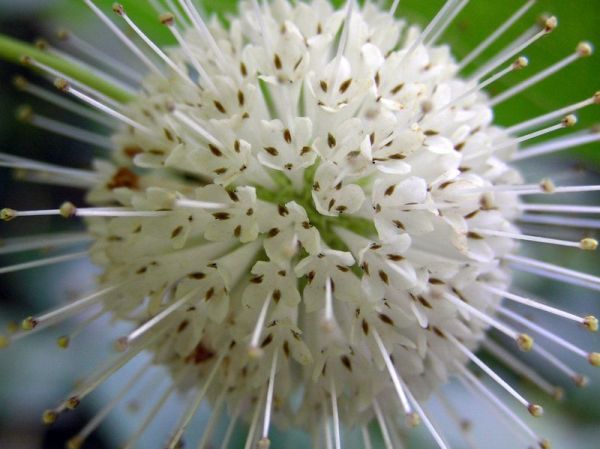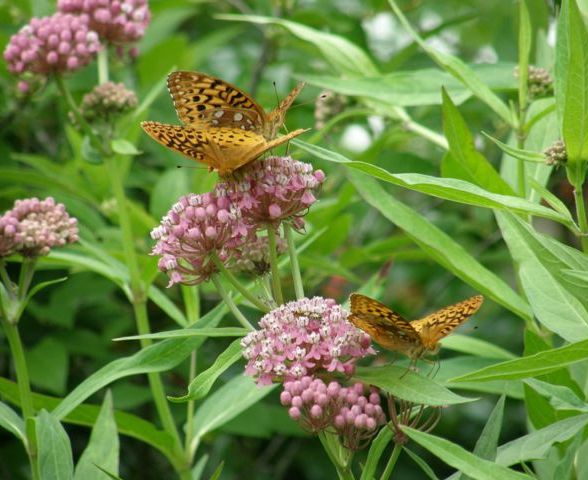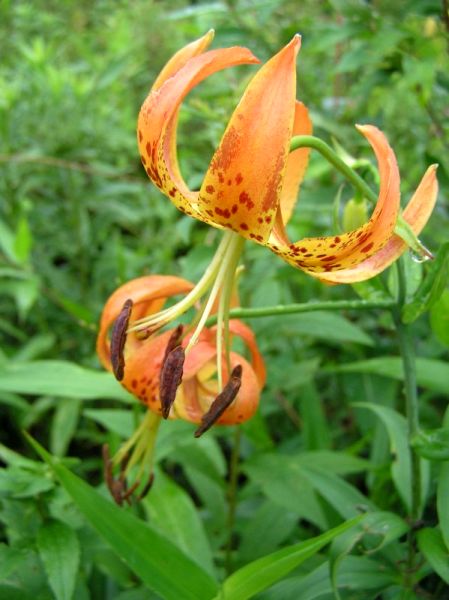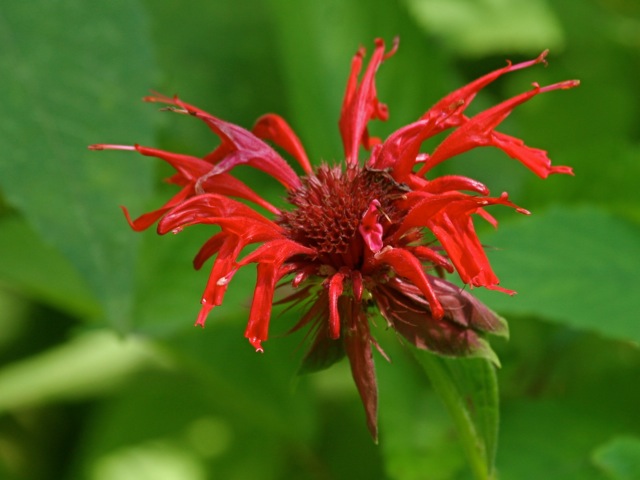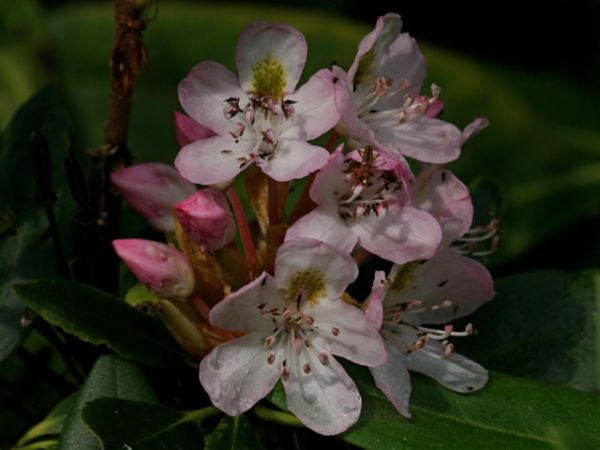
In my Joe-Pye weed post last week I said I had two favorite late summer flowers. Here’s the other one: Tall Ironweed (Vernonia altissima).
Deep magenta-purple flowers in a showy flat-topped cluster at the top of a 10-foot plant. The stem is so tough – like iron – that cattle won’t browse it in the fields so it stands as an ornament. It’s so large you can easily see it from the highway, so beautiful it’s worth stopping to take a look.
(photo by Chuck Tague)
